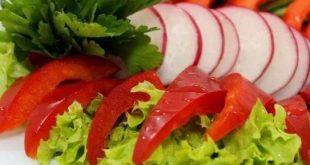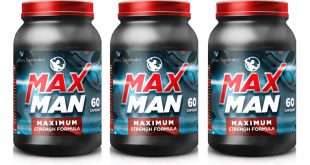Help me delicious food shots
I’ve got a canon eos 1100d and 18-55mm lens, and I really want to be able to photograph the food I cook, which will look great on my blog and website. I’ve seen some amazing shots on other sites and in books, but I’m not sure how I can get a similar look. Can you help me get professional-looking results without spending a fortune? Amanda King, Bristol.
The right ingredients
There’s more to getting professional results than buying expensive gear. Even a basic SLR such as Amanda’s EOS 1100D is capable of producing amazing images. Like any still-life subject, lighting and attention to detail are the keys to successful food photography. You don’t need expensive lighting to learn these skills: all you need is a window, some basic items such as a translucent white sheet to diffuse the light, and some reflectors to bounce the light back.
However, there are also effects that are only achievable with certain gear. The shallow depth-of-field look that’s popular with professional food photographers is difficult to achieve with the standard zoom lens. As Amanda only has the 18-55mm lens, I bring a 50mm f/1.8 lens to help transform her results.
The Photo Fixer investigates
Amanda’s images show that she has a great eye for composition and light. She has also managed to achieve some shallow depth-of-field effects by getting as close as possible with her standard zoom — but more distant shots highlight the limitations of the maximum aperture that’s available with the lens she’s using.
Amanda has relied purely on available light for her images. She’s done a great job of seeing the photographic opportunities, but she hasn’t really tried to control or manipulate the lighting to help her images. So these are the two main areas that she needs to work on to help improve her shots, and allow her to get images in a wider range of lighting conditions.
I meet Amanda at her home, armed with some basic reflectors, diffusers and lenses that will help her master the art of food photography.
Ambient expertise
After chatting with Amanda about the type of images she wants, we decide to use the window light in her kitchen, rather than flash. But while using ambient light may seem much simpler than using flash, she still needs to think about, and control, the lighting.
We start by positioning her table so that the main window in the room is behind and to one side of the walnut cake we’ve chosen as our first subject. Even though there isn’t any direct sunlight, it’s still producing a strong backlight on the cake.
I show Amanda how simply placing a diffuser over this window softens the light, producing a better result. But the front of the cake is still a little too dark, so I add some simple reflectors made from card covered in silver foil to bounce the light back onto the cake.
Focusing attention
Using shallow depth of field is one of the key techniques that will help Amanda’s food shots stand out. We start by using Amanda’s standard 18-55mm lens at the longest focal length to shoot a simple slice of chocolate cake. But even shooting at the widest aperture, f/5.6, and getting as close as possible, the images have too much depth of field. So I get Amanda to swap her standard zoom for a 50mm f/1.8 lens I’ve brought along.
Using this lens instantly transforms the look of Amanda’s images, giving them the shallow depth of field that is so popular in food photography — but it also presents a new challenge. When using the widest aperture settings, focusing on the right area of the subject is critical.
Up until now Amanda has been relying on the autofocus on her Canon EOS 1100D, but I suggest that she should try manual focus to give her more control. So I get her to switch to Live View and zoom in, to help her focus precisely on the area of the subject that she wants to be sharp.
Extra ingredients
Next we decide to look at how Amanda can use some other simple techniques to improve her images. She has shot most of her images from just above the level of the table, which is perfect for achieving the shallow depth of field, but this viewpoint makes it difficult to show the whole dish, particularly with larger subjects.
I put a piece of wood down on the floor, a nd choose one of the cakes so that Amanda can shoot it from above. Using the floor, rather than the table, makes it much easier to get high enough to include the whole subject.
The final technique we try is to use some of the props that Amanda has around her kitchen, to give her shots a more homely feel than shooting the food on its own. Amanda soon discovers that adding extra subjects isn’t just a case of filling the table with items though, as the different shapes, colours and heights means that without carefully thinking about where to place each object, the image can easily become cluttered and messy.
Getting the right combination of objects needs plenty of time trying different objects in the background. After 20 minutes, we arrive at a set-up that complements the subject, without taking attention away from the foreground.
It still takes a few more frames, fine-tuning the exact positions after each shot, to achieve the final composition.
Let them eat cake!
The Photo Fixer says
«Taking control of the light is the most important aspect of almost any still-life or close-up subject, and it’s particularly true when shooting food. Amanda had assumed that a bright, sunny day would be the ideal conditions for shooting food, but these conditions are among the most difficult to master.
«Using a simple white cloth to diffuse the light, and making some reflectors will help Amanda to get to grips with this without spending a fortune on gear. Then it’s a case of practising using these simple tools to light the different areas of the subject for the best results.
«If Amanda decides to get a 50mm lens, she will need to practise her manual focusing skills. The shallow depth of field available makes it difficult to focus precisely using autofocus, even by selecting the individual focusing points.»
Amanda says
«I love to bake and cook for friends and family, and I have great plans to record all my recipes for friends I’ve collected over the years. For that I needed to master how to take successful food shots. I have struggled with my camera for shots that really focus on the detail and I can never get the lighting quite right.
«It was so useful for Chris to show me how to make changes to my camera, but also to the set-up of the shot. We used various techniques such as light diffusers and reflectors. These can be as simple as an A4 card backed in tin foil, which was particularly useful for positioning round a plate! I’m going to be making some at the weekend.
«Changing from my 18-55mm to the 50mm lens, I discovered how to select where I would like the focus to be and how the camera would blur whatever was in the background.»
 МЛМ Лидер сайт — блог лидера Орифлейм МЛМ Лидер — сайт Константина Харченко mlm leader Oriflame
МЛМ Лидер сайт — блог лидера Орифлейм МЛМ Лидер — сайт Константина Харченко mlm leader Oriflame



